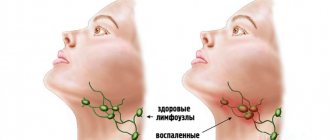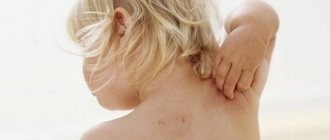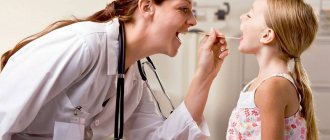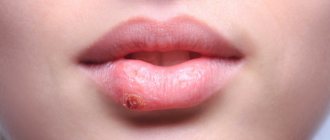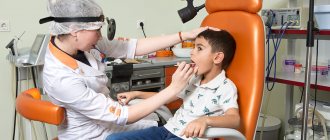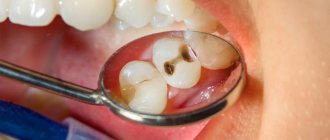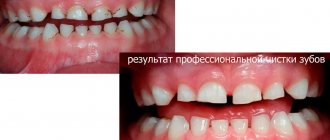Acne in children is one of the most common skin diseases, especially in adolescence. We are talking about a violation of the hair follicles and sebaceous glands, which become clogged, leading to the formation of pimples and cysts.
Acne or Acne vulgaris by its medical name is defined as inflammation of the sebaceous glands. Most often this occurs during puberty, as a result of hormonal activity. In addition to pain and discomfort, acne in boys and girls is fraught with social isolation, the constant need to hide damage, low self-esteem, and in some cases even the development of anxiety and depression. That's why it's so important to understand what acne is and what the most effective ways to treat it are.
Acne classification
When classified by age group, there are mainly two types of acne:
- In newborns and young children. The belief that acne only affects teenagers and adults is wrong. Infants, children of preschool and early school age, although not often, also suffer from acne. Newborns face this problem because their mothers transfer hormones to them shortly before birth. Acne also occurs when the stress of childbirth causes the baby's body to release these hormones.
- Teenagers and adults. Acne affects 80% of people aged 11 to 30 years. Usually occur during pubertal changes in hormonal levels. Increased production of sex hormones during puberty makes the sebaceous glands more active.
Table - Classification of childhood acne by age
| Form | Child's age |
| Neonatal | from birth to 6 weeks |
| Infantile (early childhood) | from 6 weeks to 12 months |
| Middle childhood | from one to 7 years |
| Pre-adolescent | from 7 to 12 years (for girls before menarche) |
Neonatal acne develops during a period of hormonal changes. In all forms of acne, additional provoking exogenous factors play a significant role.
Prevention measures
To ensure that your child is not bothered by any pimples around the mouth, it is necessary to follow some preventive recommendations. In early childhood, it is worth monitoring the baby, not allowing him to put foreign objects in his mouth. Equally important is skin care, which uses high-quality baby products. To prevent a rash from occurring during teething, it is recommended to always keep a napkin with you and wipe the skin. Careful monitoring of your baby's oral hygiene helps prevent acne. It is important to feed your child proper and healthy food so that the immune system does not weaken. During cold weather, a special protective cream is applied to the epidermis.
Causes and risk factors of acne
Acne develops around the hair follicles and is caused by excessive sebum production. Increased secretion of sebum in combination with the presence of dead skin cells on the epidermis leads to clogging of the follicles of the hair shaft, which is accompanied by the appearance of comedones.
Comedones are the same tiny sores with a white tip that turn black when exposed to oxygen. Exacerbation of acne is caused by the involvement of an infectious process. A moist and oily environment is a favorable substrate for the proliferation of acne bacilli (Propionibacterium acnes).
When the bacteria is present, an inflammatory reaction develops, with pimples forming a red plaque on the top of the skin. The final sign of acne is nodular acne, characterized by large inflammatory lesions that can hurt and even leave scars after recovery.
There are several factors that increase the likelihood that a child will develop acne:
- using skin and hair care products that contain chemicals that irritate the skin;
- using alkaline soap and very hot water;
- squeezing pimples and scratching affected areas of the skin;
- frequent stressful situations or constant nervous tension;
- excessive sweating and dandruff.
Learning what causes acne in children can help find ways to prevent and treat the disease. This allows the child to overcome the stress and depression that he experiences due to acne on his skin.
Endocrinopathies can be the cause of childhood acne. That is why, if you have acne, you should definitely consult a doctor to rule out such severe pathologies as congenital adrenal hyperplasia, malignant testicular tumors and polycystic ovary syndrome.
Main reasons
Before treating acne around the mouth, it is worth finding out the source of its appearance. Dermatologists have found that most often young children suffer from various rashes of similar localization due to an allergic reaction to food. There are other reasons that contribute to the appearance of pimples in babies up to one year old and older:
- Atopic dermatitis. The reaction of the epidermis to some products may not be entirely normal, which is associated with weakened protective mechanisms of the immune system. Sometimes pathology is inherited from the parents to the child.
- Infectious diseases. A rash around the mouth can occur due to infection with enteroviruses, herpes, mumps, chickenpox and other pathogenic microorganisms.
- Contact dermatitis. The disease is accompanied by an irritant reaction on the skin, which occurs with regular contact with latex, synthetic fabric and other materials that are unpleasant for the child.
- Increased saliva production. Breasts have a delicate epidermis, which can become irritated by frequent interaction with salivary fluid. Pimples are often observed for this reason during teething or frequent use of a pacifier.
- Infestation with parasites. The child’s immune system is not thorough and is often unable to resist helminths, which can result in rashes around the mouth.
- Cold temperature conditions. During a long winter walk or during strong winds, the baby's skin is affected and acne may appear on it. This disorder does not require any treatment, the main thing is to prevent the child from scratching the affected area.
Symptoms of acne in children
Pimples appear on any part of the body. However, most often they appear in places where there is a high concentration of sebaceous glands.
The most commonly affected areas in children with acne include:
- Ears. Acne in a child's ears is localized behind the auricle, along the edge and on the lobe, closer to the temporal region at the upper base. Acne looks like blackheads or inflamed papules.
- Face. Acne on the face of a child is characterized by a few individual closed or open comedones. Closed ones are represented by yellowish or pearly-white papules, the size of which varies from 1 to 2 mm. Over time, they turn into open comedones, which look like blackheads.
- Nose. Acne on a child's nose appears as isolated pustules or papules - surrounded by a pink rim. Characterized by rapid (1-2 weeks) spontaneous resolution.
Also, acne in children can be localized on the chest, upper back and neck. After acne disappears, there are usually no traces left on the skin. The situation is complicated by infection - signs of inflammation appear (swelling, redness along the periphery). The elements transform into pustules with purulent discharge, which is yellow in color. In this case, it is quite difficult to avoid marks on the skin.
Varieties and characteristics
Red pimples in the mouth area or in the corners of the lips need to be treated in different ways depending on the type of disorder. The table shows the main types of rash and their brief description:
| Type | Clinical picture |
| Erythema toxic form | Fixed in newborns in the first days |
| Rashes of a dense structure and a reddish tint | |
| Not accompanied by any pathological symptoms and go away on their own | |
| Sweating | Small pinkish pimples around the mouth or all over the body |
| Protrude above the skin | |
| Does not cause pain and does not affect the general well-being of the child | |
| Newborn acne | They are ulcers that have a white center |
| They are not dangerous and disappear after 21 days. | |
| Hives | Red pimples accompanied by an inflammatory reaction |
| Often causes swelling of the area around the mouth and nose | |
| Often lead to bronchospasm or Quincke's edema | |
| Atopic dermatitis | A red spot that may cover a large area |
| The rash causes severe itching and burning | |
| Weeping crusts may form at the site of acne. | |
| Rash associated with infection | They are red dots with clear edges |
| Pimples form around the lips and on the oral mucosa | |
| Feverish condition and possible increase in temperature | |
| Enlarged lymph nodes at the site of the lesion | |
| Digestive tract disorders | |
| Herpes virus | Pimples on the upper lip or around the mouth look like blisters containing exudate. |
| Provokes itching and severe pain in the child | |
| Often, the temperature rises against the background of the rash |
How is this treated?
Traditional drug treatment includes the use of topical ointments as prescribed by a doctor, along with oral antibiotic therapy or internal medications.
External therapy most often involves the use of retinoid ointments, which reduce inflammation and help exfoliate the top layer of skin. Topical ointments can be used without a prescription. These drugs contain a small amount of active substance and are therefore safe.
In addition to medical attention, it is important to remember that acne develops in moist areas of the skin, so maintaining proper hygiene is important. Timely and thorough cleansing of the skin can significantly reduce inflammatory processes. It is important to give preference to the prescribed care products and not to rub or scratch the wounds, as this will cause additional irritation and worsen the inflammatory process.
You can use drugs with antibacterial action that will help eliminate the inflammatory reaction. You should never squeeze the blackheads because this will spread the bacterial infection and may also cause scarring on the skin.
Extra hydration and protection
Many people make the mistake of thinking that acne-prone skin does not need additional moisturizing. The truth is that adjusting your moisturizing emulsion can help balance sebum production throughout the day. Moisturizing emulsions are easily absorbed, helping to balance moisture levels and prevent aggravation or irritation.
Skin affected by acne needs constant protection from solar radiation, since exposure to direct ultraviolet rays promotes the secretion of sebum. You need to choose sunscreen according to your age and skin type. It is recommended to give preference to products that do not contain parabens.
Nutrition and lifestyle
Lifestyle also influences acne. Diet, stress and hours of sleep also negatively affect the condition of the skin. It used to be that certain foods contributed to acne. Today, a personalized diet is being promoted:
- It is recommended to reduce the consumption of sweet or spicy foods;
- reducing foods that are not beneficial mitigates damage.
In addition to dietary recommendations, you should also use Omega-3 supplements. These are polyunsaturated fatty acids that the body cannot produce on its own, and they are found in sea fish oil or plant products. Their presence will help mitigate inflammatory processes in the body, which means it will have a beneficial effect on all skin diseases and acne in particular.
How and with what to treat?
For any type of rash around the mouth, you should consult a specialist who will determine the cause and prescribe treatment.
If children of different ages have pimples in the corners of their mouths, then you should not delay a visit to a pediatrician or dermatologist. The specialist will find out the cause of the disorder and select the necessary therapeutic measures. Treatment is adjusted for each patient individually, taking into account age, type and severity of the rash. If the source of the problem is atopic dermatitis or allergic manifestations, the allergen that negatively affects the baby’s health is removed from the diet. If this measure does not help, then antihistamines may be prescribed.
When an allergy occurs during breastfeeding, the nursing mother needs to review her diet and exclude all foods that can cause acne around the mouth.
When the problem is caused by the herpes virus, antiviral therapy is carried out with a choice of individual medications suitable for the patient’s age. For medicinal purposes, you can use ointments, gels, sprays or oral medications. In the fight against acne formed as a result of enterovirus infection, antibacterial drugs are required, which are prescribed exclusively by a doctor. A rash associated with helminth infection is eliminated by deworming the body with the help of special drugs.

